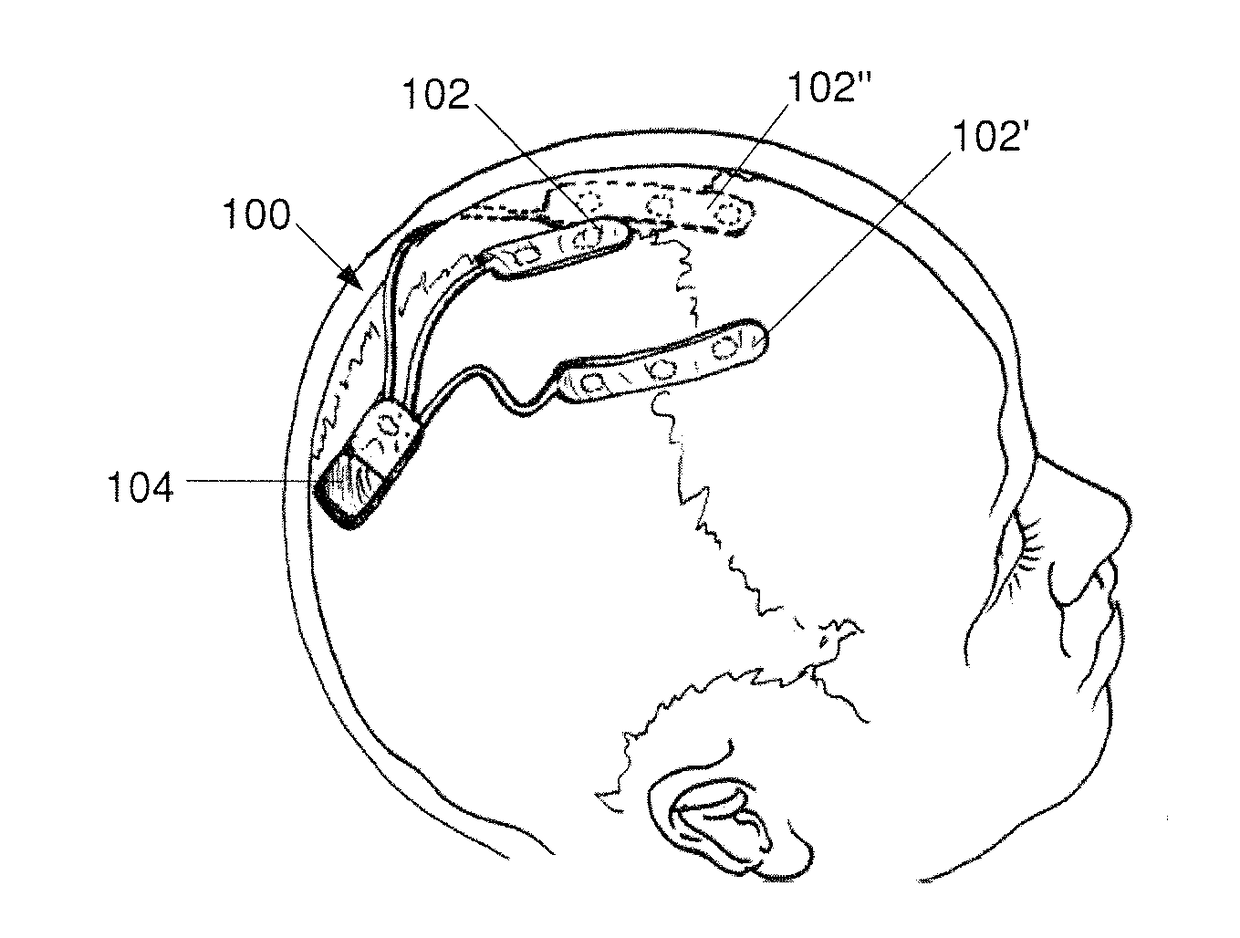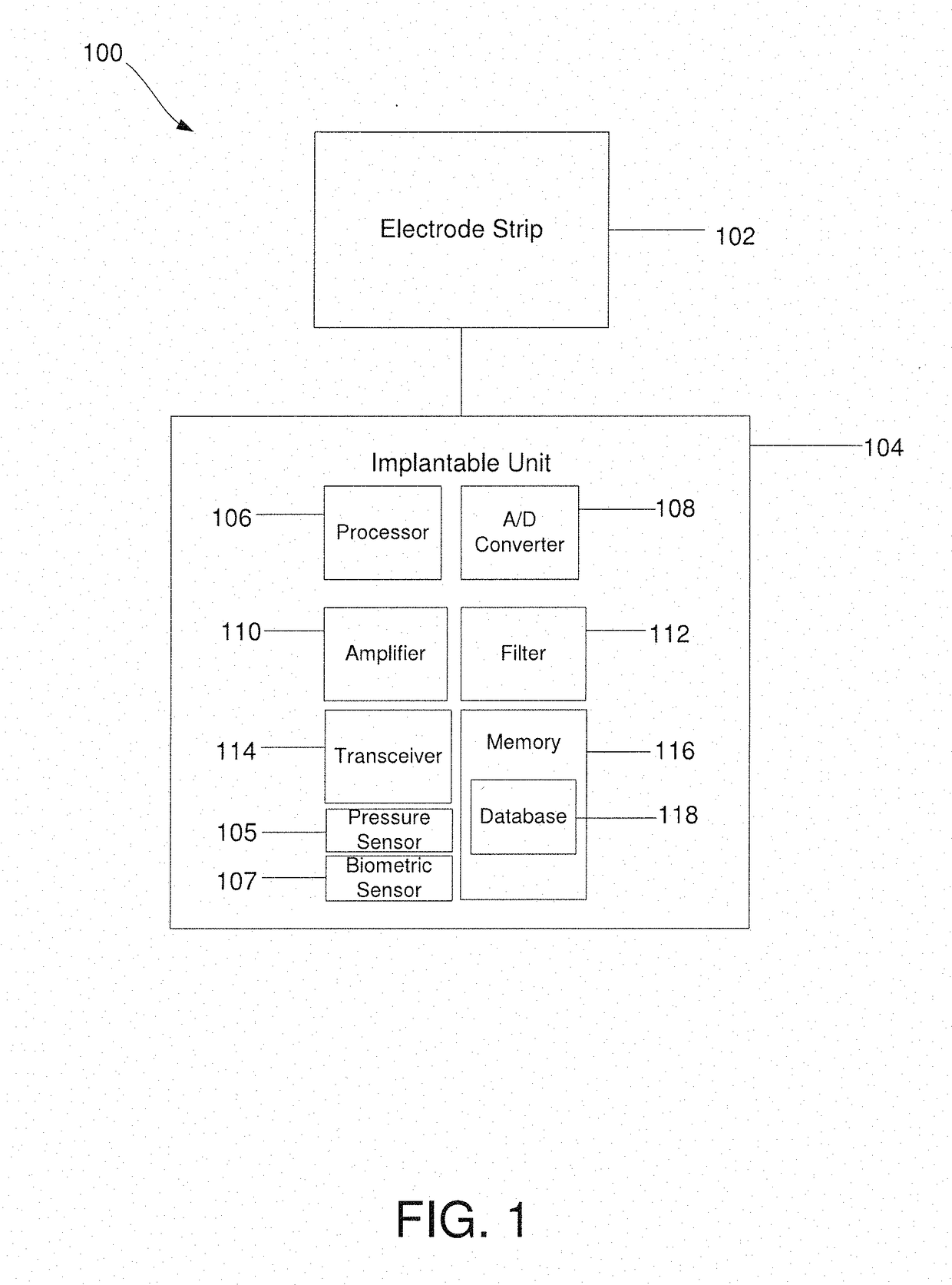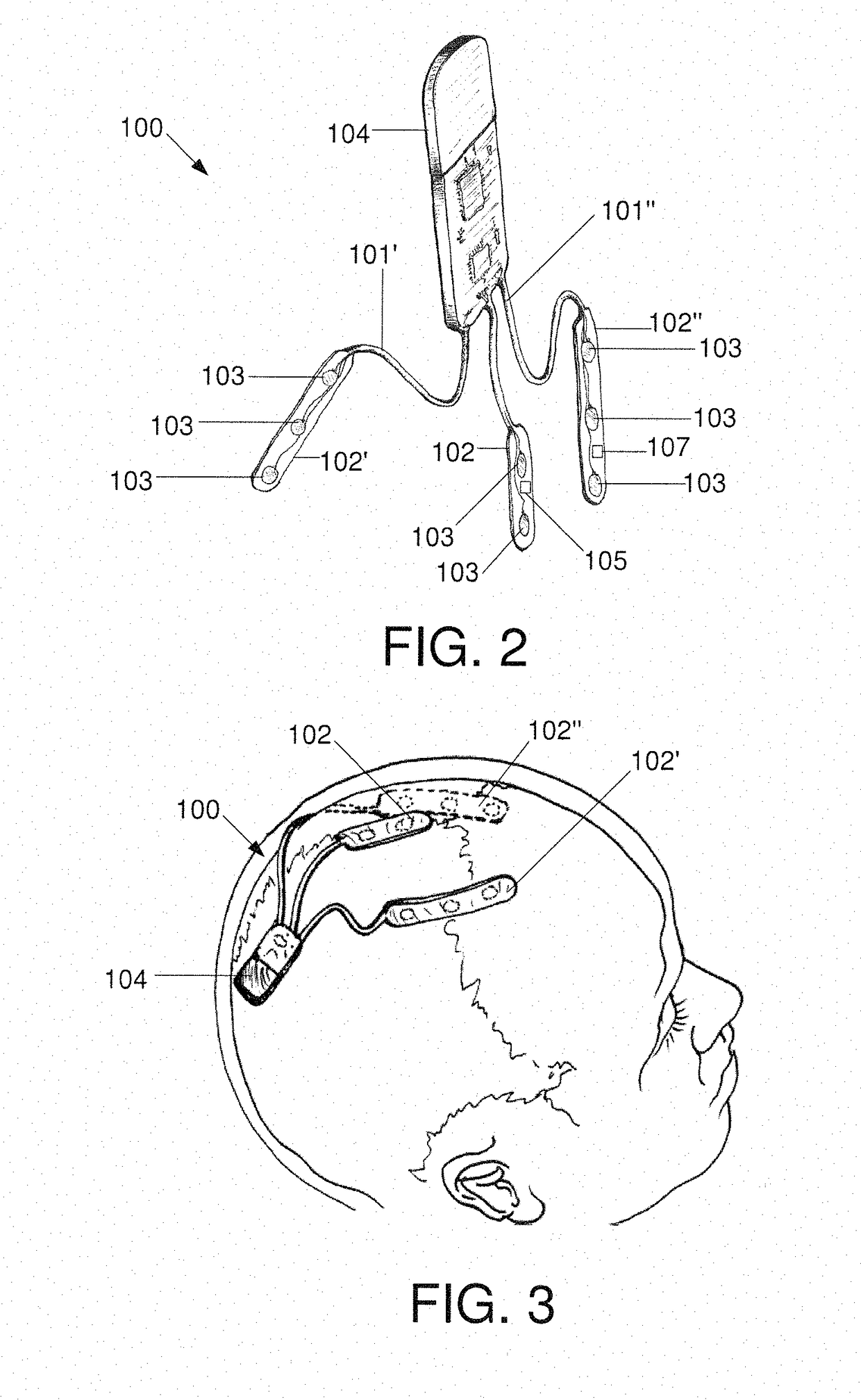Minimally Invasive Subgaleal Extra-Cranial Electroencephalography EEG Monitoring Device
- Summary
- Abstract
- Description
- Claims
- Application Information
AI Technical Summary
Benefits of technology
Problems solved by technology
Method used
Image
Examples
example i
[0063]The exemplary device 100 may be implanted in a subgaleal region of a patient, near the brain, as shown in FIG. 11. As can be seen, at least one contact 103 (e.g., an electrode for recording electrophysiological data, particularly EEG data) of the device may be implanted in a subgaleal region that is between the skull 14 and the scalp 16 of the patient near the brain 12 of the patient. Specifically, the at least one contact 103 or electrode arrays 102, 102′, 102″ of the device 100 may be position perpendicular to a cranial vertex 18 of the patient. More particularly, the at least one contact 103 or electrode arrays 102, 102′, 102″ of the device 100 may lie across a mid-length of the patient's skull 14. It is contemplated that the exemplary device 200 may be alternatively implanted in the subgaleal region of the patient in the same manner described above and as shown in FIG. 11.
[0064]The device 100, 200 may be used to record EEG data from the patient extracranially without drill...
example ii
[0066]The exemplary device 100, 200, 300 may also be used to record EEG data from the patient that allows for identification of sleep stages (e.g., awake and sleep states). In particular the exemplary unitary device 300 as show in FIGS. 6-10 may detect sleep stages of a patient from a single device implanted at a single location, preferably at the cranial vertex. In Example II, the exemplary device 300 may be used to conduct a pre-surgical evaluation of a patient to record EEG data and determine electrophysiological signals for awake and sleep states of the patient. FIG. 13 shows the EEG data recorded over time in an awake patient who is being evaluated for epilepsy surgery by intracranial electrodes implanted directly onto the dura mater as well as EEG data recorded by an exemplary subgaleal device 300 of the present invention. A patient who is being considered for epilepsy surgery may be in one of two categories: (1) if their seizures are not their seizures are not adequately cont...
example iii
[0069]In Example III, the exemplary device 100, 200, 300 may be used to record EEG data from the patient and detection of epileptic activity. The exemplary device 300 may be used to conduct a pre-surgical evaluation of a patient to record EEG data and determine ictal activity of the patient. FIG. 15 shows the EEG data recorded over time in a patient who is being evaluated for epilepsy surgery by intracranial electrodes implanted directly onto the dura mater as well as EEG data recorded by an exemplary subgaleal device 300 of the present invention. In the data shown in FIG. 15, the top 17 data lines show EEG data obtained from intracranial depth and subdural electrodes, whereas the last data line, which is also labeled as “SG EEG,” shows EEG data obtained using electrodes that are implanted into the subgaleal space of the patient, such as the exemplary device 300, at the vertex on the right side. As can be seen in FIG. 15, complex partial seizure from the right temporal lobe may be c...
PUM
 Login to View More
Login to View More Abstract
Description
Claims
Application Information
 Login to View More
Login to View More - R&D
- Intellectual Property
- Life Sciences
- Materials
- Tech Scout
- Unparalleled Data Quality
- Higher Quality Content
- 60% Fewer Hallucinations
Browse by: Latest US Patents, China's latest patents, Technical Efficacy Thesaurus, Application Domain, Technology Topic, Popular Technical Reports.
© 2025 PatSnap. All rights reserved.Legal|Privacy policy|Modern Slavery Act Transparency Statement|Sitemap|About US| Contact US: help@patsnap.com



